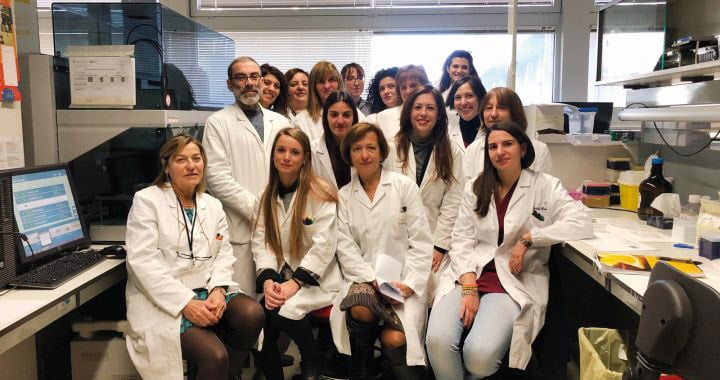Keywords:
Genetic testing to screen for congenital defects is useful to identify susceptibility to, or the cause of, many diseases. The medical genetics department at the Policlinico di Milano – a teaching hospital in Italy’s Lombardy region – is using automation to improve the throughput of its genetic screening workflow, aiming to increase the number of diseases it can test for, and the number of samples it can handle.
Policlinico di Milano is one of Italy’s oldest hospitals, founded more than 500 years ago. In addition to patient care, the hospital is heavily involved in research in a variety of areas, from neurology to cardiology. The medical genetics department is no exception, carrying out studies to understand the role of mutations in disease, alongside its routine screening of patient samples to diagnose diseases such as cystic fibrosis, thalassemia and Duchenne muscular dystrophy. Manuela Seia, head of the medical genetics laboratory at the hospital, explained: “We can identify the causes of many conditions, from microdeletions of the Y chromosome in male infertility to the multitude of genes associated with Ehlers-Danlos syndrome or Parkinson’s. We also perform preimplantation genetic diagnosis (PGD) for couples undergoing IVF, to ensure that embryos are free from any genetic diseases. However, the main bulk of our work is the screening of newborn samples, where access to early diagnosis and treatment can be vital to long-term health. Samples are collected from all newborns born in the Lombardy region – about 90,000 births a year – and our role is to confirm the biochemical findings for patients who have already tested positive for disease biomarkers, uncovering the genetic cause.”
“We currently process around 5,000 samples a year and our workflow is quite complex. We might be analyzing a completely different set of genes in each sample we receive, depending on the disease. For some, it’s one gene, such as the CFTR gene for cystic fibrosis. For others, it’s a large panel, about 50 genes for Parkinson’s, for example. We also work with a lot of different sample types including blood and dried blood spots, buccal swabs, chorionic villi, amniotic fluid, urine and tissue biopsies. It’s therefore very important to have a workflow that has a high throughput and is incredibly precise, so that we can get an accurate diagnosis with a quick turnaround time from sample to result. We rely a lot on NGS and have developed our own molecular techniques to achieve a high level of precision in a short time. We use a NextSeq™ 550 platform (Illumina) for exome sequencing – to identify novel causative genes – and a MiSeq™ platform (Illumina) to perform a more targeted approach, looking at the association of a panel of genes with a certain disease. We also use Sanger sequencing for thalassemias and hemoglobinopathies, and to confirm the results of NGS analysis.”

The medical genetics team at Policlinico di Milano
Manuela continued: “Originally, we were performing all of our workflows manually, which took up a lot of time and was prone to error. Colleagues in another lab were successfully using a Freedom EVO® workstation to automate their workflows and so, four years ago, I decided to get two standard platforms, and then added another system two years later. Each Freedom EVO workstation is used for a completely different application; the first is used for PCR set-up to test for short tandem repeats or mutation analysis. The second platform automates the preparation of DNA for Sanger sequencing, based on purifying PCR products; at this stage it is vital to remove all unincorporated dye terminators from the PCR reaction to prevent base calling errors. Our third Freedom EVO is used for NGS library preparation – including Agilent SureSelect™ and HaloPlex workflows, and other assays based on MASTR technology – which can be complex, particularly because we use specific indexes for every sample. Introducing these index sequences onto DNA fragments enables 96 different samples to be pooled into a single lane on a flow cell and sequenced together, and the Freedom EVO allows this to be performed automatically, reducing error rates.”
"The systems have been a great asset to us; they have significantly reduced the amount of manual work we conduct – which was very laborious – and they save us huge amounts of time."
“The systems have been a great asset to us; they have significantly reduced the amount of manual work we conduct – which was very laborious – and they save us huge amounts of time. It’s also much more cost effective to automate the workflow, rather than hiring numerous people to perform everything manually. Not only that, but automation improves the quality of our results and reduces the chances of errors which could potentially lead to misdiagnosis of patients.”
“When the platforms first arrived, Tecan helped us to adapt them to our workflow. The Tecan team was very helpful and everything has worked perfectly since. The Freedom EVOs are user friendly, faster than other systems I’ve seen, and I think they offer the best performance on the market – we’re very happy with them. Next year, we will be adding a panel of 85 genes involved in pneumopathies to our screening, as well as further metabolic disease gene panels. This will include amino acid and vitamin B defects, fatty acid oxidation defects, galactosemia and hyperammonemia, and aminoacidopathies, such as phenylketonuria and maple syrup urine disease. With these extra panels, we predict that metabolic diseases will account for up to 30 % of our workload next year and, although this is a significant increase in our throughput, our staff numbers will remain the same. I’m confident that our Freedom EVO set-up will easily support this expansion and that we will continue to achieve a high throughput, quick turnaround time and precise diagnoses,” concluded Manuela.
To find out more about Tecan’s genomics solutions, visit www.tecan.com/genomics
To learn more about the work of Maneula at the Policlinico di Milano, visit www.policlinico.mi.it/i-nostri-professionisti/profilo/601/seia-manuela-biologo-responsabile-di-unit-operativa-semplice
Keywords:









